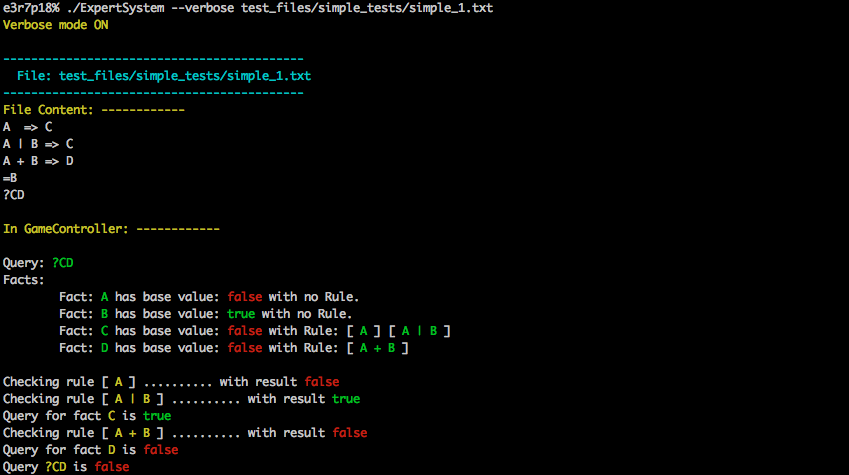Backward-chaining inference engine. By aleung-c and ocarta-l.
This two-man project is a simple inference engine. That means it is a program that makes deductions. For this project, we used object oriented C++ with basic design patterns over the course of half a week.
To understand how our resolver works, there are some notions to define.
We have a number of facts, that for our program we will call by letters, like "A", "B", or "C", and which can be "TRUE" or "FALSE". By default, all our facts are "FALSE".
Then, we have a number of rules, that have a format like "A + B => C", and which defines results that are "TRUE". These rules uses several operators: "+" meaning "AND", "|" meaning "OR", and some others.
Next, we have the initials facts, in the form of "=ABC", defining facts that are TRUE at start.
And finally, we have the query, in the form of "?A".
With these elements, we can create simple systems, that our program will solve. Here is a simple example:
A + B => C # this is a rule
=A # A is true by default.
?C # what is the value of C?
In this case, C is FALSE, because 'A AND B implies C'. However, only A is TRUE, that is why C is FALSE.
Now see this modification:
A | B => C
=A
?C
Now, C is TRUE, because the rule is 'A OR B', and A is TRUE, so C is TRUE.
What is the point of all this nonsense you ask? Well this is the basis of what is called an Expert System.
Imagine this same resolver with a huge database of thousands of rules and facts, about medicine for example. Now we have a patient with symptoms.
We enter the symptoms into the expert system, and we ask 'what is the illness ?'
For more on expert system, see this page.
